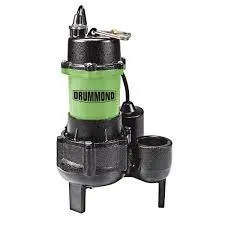Javanese
- Afrikaans
- Albanian
- Amharic
- Arabic
- Armenian
- Azerbaijani
- Basque
- Belarusian
- Bengali
- Bosnian
- Bulgarian
- Catalan
- Cebuano
- Corsican
- Croatian
- Czech
- Danish
- Dutch
- English
- Esperanto
- Estonian
- Finnish
- French
- Frisian
- Galician
- Georgian
- German
- Greek
- Gujarati
- Haitian Creole
- hausa
- hawaiian
- Hebrew
- Hindi
- Miao
- Hungarian
- Icelandic
- igbo
- Indonesian
- irish
- Italian
- Japanese
- Javanese
- Kannada
- kazakh
- Khmer
- Rwandese
- Korean
- Kurdish
- Kyrgyz
- Lao
- Latin
- Latvian
- Lithuanian
- Luxembourgish
- Macedonian
- Malgashi
- Malay
- Malayalam
- Maltese
- Maori
- Marathi
- Mongolian
- Myanmar
- Nepali
- Norwegian
- Norwegian
- Occitan
- Pashto
- Persian
- Polish
- Portuguese
- Punjabi
- Romanian
- Russian
- Samoan
- Scottish Gaelic
- Serbian
- Sesotho
- Shona
- Sindhi
- Sinhala
- Slovak
- Slovenian
- Somali
- Spanish
- Sundanese
- Swahili
- Swedish
- Tagalog
- Tajik
- Tamil
- Tatar
- Telugu
- Thai
- Turkish
- Turkmen
- Ukrainian
- Urdu
- Uighur
- Uzbek
- Vietnamese
- Welsh
- Bantu
- Yiddish
- Yoruba
- Zulu
Telephone: +86 13120555503
Email: frank@cypump.com
Dec . 01, 2024 11:49 Back to list
septic field pump
Understanding Septic Field Pumps An Essential Component for Home Waste Management
Septic systems are crucial for managing household wastewater in areas without centralized sewer systems. At the heart of many septic systems lies the septic field pump, an essential component that ensures the efficient functioning of the entire system. Understanding the role, functionality, and maintenance of septic field pumps can help homeowners maintain their systems effectively and prevent costly repairs.
What Is a Septic Field Pump?
A septic field pump, also known as a sewage pump or effluent pump, is designed to move wastewater from the septic tank to the drain field, or leach field. When waste enters the septic tank, solids settle at the bottom while lighter materials like grease float to the top. The liquid effluent in the middle is what the pump handles, transferring it to the drain field where it can be treated naturally by the soil.
How Does It Work?
When the effluent level in the septic tank rises to a certain point, the septic field pump is activated, usually by a float switch
. The motor of the pump pushes the effluent through pipes leading to the drain field. The drain field consists of trenches filled with gravel and perforated pipes that allow the effluent to seep into the soil, where it undergoes natural filtration.A well-functioning septic field pump is vital for maintaining the efficiency of a septic system. If the pump fails, the effluent can back up into the home or overflow, leading to unsanitary conditions and environmental hazards. Additionally, excess effluent can saturate the drain field, resulting in its failure and requiring expensive repairs or complete replacement.
Signs of a Failing Septic Field Pump
septic field pump

Homeowners should be aware of the symptoms indicating a failing septic field pump. Common signs include
1. Slow Drains If household drains are slow or backing up, this could suggest a pump issue. 2. Odors Foul odors around the septic tank or drain field indicate that wastewater may not be moving properly. 3. Pooling Water Unusual pooling or standing water in the yard near the drain field can be a sign of system failure. 4. Alarm System Most modern septic systems come equipped with alarms that sound when there is a problem, such as when the pump is not functioning.
Maintenance Tips
Maintaining your septic field pump is key to ensuring its longevity and efficiency. Here are some tips for homeowners
1. Regular Inspections Schedule professional inspections at least once a year to assess the health of your septic system, including the pump. 2. Pump Regularly Depending on household size and water usage, a septic tank should typically be pumped every 3-5 years. However, this can vary, so consulting a professional is advisable. 3. Avoid Chemical Drain Cleaners These can disrupt the natural bacteria in the septic system, harming its ability to break down waste. 4. Monitor Water Usage Reducing water usage can lessen the burden on the septic system, enhancing the pump's efficiency and lifespan. 5. Know Your System Familiarize yourself with your septic system and its components. Understanding where the pump is located and how it functions can aid in maintenance and troubleshooting.
Conclusion
A septic field pump plays a critical role in the effective management of wastewater for homes reliant on septic systems. By understanding its function, recognizing the signs of failure, and performing regular maintenance, homeowners can ensure that their septic systems operate smoothly and efficiently. In turn, this will help avoid the costly repairs associated with pump failures and keep the environment safe from contamination. Prioritizing septic system care is not just about convenience—it is also about protecting public health and the environment.
-
ISG Series Pipeline Pump - Chi Yuan Pumps | Energy Efficiency&Compact Design
NewsAug.03,2025
-
ISG Series Vertical Pipeline Pump - Chi Yuan Pumps Co., LTD.|High Efficiency, Low Noise, Durable
NewsAug.02,2025
-
ISG Series Vertical Pipeline Pump - Chi Yuan Pumps | High Efficiency, Low Noise
NewsAug.02,2025
-
ISG Series Vertical Pipeline Pump- Chi Yuan Pumps Co., LTD.|High Efficiency&Compact Design
NewsAug.02,2025
-
Heavy-Duty Mining Sludge Pumps - Wear-Resistant Slurry Handling
NewsAug.02,2025
-
Horizontal Split Case Pump with GPT-4 Turbo | High Efficiency
NewsAug.01,2025










